Jesse and I spent an afternoon at the Denver Art Museum, for the Passport to Paris exhibit.
It was a bonafide, child-less date, though we spent most of our time in different spaces. I found, as I often do, that I am as struck by my fellow spectators—who they are, how they conduct themselves in the space—as I am by the actual art.
There were over 100 total pieces in the exhibition, but I chose only a few to highlight as part of my viewing experience—artistic and sociological—as a whole.
The description was as follows:
The exhibit focuses on French art from the late 1600s to early 1900s and explores changes in art and society during three important centuries in art history. Revealing how art mirrors society, guests will get a sense of the changes that took place from the time of the powerful and absolute monarchy of Louis XIV to the individualistic café society.
So here we go.
Exhibition Room I: Fit for a King.
In the 1600’s, the French King ruled over all aspects of society, including what style of clothes the people chose to wear, what kind of art they hung in their homes. He spent 72 years on the throne—to this day, the longest reign in history.
A middle-aged man with a skullet and a plaid flannel shirt shuffled through a crowd of on-lookers, holding the audio-info-wand to his ear and squinting in a state of concentrated listening. I wasn’t close enough to smell him, but if I were, I assumed his smell was that of old spice and bacon.
I looked around for Jesse, but he was nowhere to be found. Jesse is also totally bald on top, and he often threatens, in the heat of an argument, that he’ll grow a skullet! (For those who are unaware of the word skullet, it’s is term for being bald on top, with longer hair on the sides and back.) I wanted to point out the Skullet man to him as a visual reference for the next time the topic arises.
Passport to Paris is a timed exhibit. This means you buy tickets for a specific time and stand in line, as if for an actual performance. Therefore, the 1:30pm group of art-goers would be traveling together, as if we all signed up for the same field trip. These were the faces we’d become familiar with—passing back-and-forth, nodding hi, offering eye contact, avoiding eye contact, smiling, looking down.
If I were to return tomorrow, or on a weekday, perhaps it would be less crowded, or the demographic would be younger and louder. But, regardless of specifics, the randomness of my fellow spectators—and the alchemy created—was just as much part of the exhibit as the paintings.
And the Skullet man was the first of the day’s cast of characters who stood out to me. I slowed up a bit so I could stand next to him at The Astronomy Lesson of the Duchesse Du Maine, by Francois De Troy.
Painted in 1702, when the king still ruled over all aspects of society, he allowed only art that represented the holy or the rich. Through the audio-wand, the voice of a woman with a thick French accent told us to notice “the gold embroidery of the duchesse’s dress…and the man in the door, was he tapping his foot out of boredom?”
I was standing right next to the Skullet man at that point— wrong about the bacon smell—joined by a half-dozen others, random as a handful of pitched dice. There was a young girl who appeared to be the same age as my niece, roughly eight-years-old. She had waist-length, gold silk hair with a piece in front twisted up with a bobby pin. She had veered away from her parents and appeared to enjoy the independence this venue allowed. She gazed at the painting with utter focus, audio-wand-to-ear, intermittently nodding.
A very old man pushed a walker up next to me—an expensive model with good breaks, smooth wheels and a seat to use when needed. He was well dressed, hair well combed. He didn’t have even the faintest aroma of oldness, which indicated that he had likely bathed that morning in honor of his trip to the museum. As far as I could tell—and I kept an eye on him throughout our time there—he was traveling alone, taking his time. He clicked the breaks and took a seat on his walker.
The space was quiet as a library. Even the security guards talked in hushed tones. There were hundreds of people in the allotted space, and I’d imagine it could get as loud as a Convent Garden night club if everyone were talking even in moderate tones. Because of this, the space didn’t lend itself to conversing with strangers. Also, talking too much would have distracted me from my own experience.
So I allowed any questions that arose to linger inside my mind like vines in a steamy terrarium.
Room II: The Upper Crust.
After the king died, the public was able to express themselves in a more liberal way. And, many did. But for others, the habit of oppression was a hard one to break. Art critics and opposing intellectuals with a moral agenda still believed that art should instruct rather than simply entertain.
As I turned the corner into this room, the first person to catch my eye was a middle-aged woman dressed in an unseasonable amount of layers. (It was a balmy, sixty-degree day in January.) She had a pink shawl over her shoulders and wore the comfortable black cotton clothes of someone who was in-for-the-night with tea and a romance novel.
I recognized her from earlier, near the entrance of the museum. She was talking with an older black security guard, portly and with wiry flickers of gray in his hair. She asked him all sorts of questions and told him she had been a teacher for twenty years. The security guard looked uncomfortable with the quantity of conversation. He was polite, but answered with brief, close-ended statements. The lady didn’t get the message.
“Do you think she’s making a move on him?” I asked Jesse.
“Hard to say,” he said and we both turned our attention their way again. She was asking him if he preferred the museum to be busy or quiet.
“Sure appears that way.”
Thick statured, with a wavy tuft of black hair, that same woman was scratching her nose very deeply as I shuffled up next to her. We gazed at The Hussar’s Family, by Marguerite Gerard, who was, notably, the only woman painter in the entire exhibit. It was a straightforward and realistic painting of a wealthy family. Gerard made sure to stick with pretty safe subject matter.
Another young girl— younger than the previous one, I’d guess her to be around six-years-old—slid up next to me. She had her audio wand to her right ear and her left arm was wrapped around a teddy bear. She wore a striped sweater dress—colors that brought to mind the taste of citrus—and had on clunky, pink cowgirl boots. Again, I couldn’t help but to wonder if this was a meticulously selected outfit for a day at the museum, or perhaps the back-up option when her first choice got oatmeal and OJ on the front.
She stared at the family in this painting, lengthy gaps between blinking. Her expression left much to the imagination, as kids’ expressions often do. Was she inquisitive? Perplexed by the gowns the ladies all wore in what appeared to be a relaxed, everyday situation. Was she bored? Sleepy?
Then, as if someone had shifted the contents of the room just slightly, the little girl and I took a few steps to the right, without words, landing with yet another smatter of strangers in front of a different painting. The pink-shawl lady went the other direction.
The Carpenter’s Shop, by Nicolas-Bernard Lepicie, was a stark different portrayal of family, in comparison to the painting we’d just seen. This was a working-class family, not dressed in the gowns of royalty we’d become accustomed to. The living conditions were meager, simple, a little dirty. Two kids were playing and having a snack. Another child was being read to by someone who appeared to be her grandmother. The mother was sewing while the father worked sanding wood. The expressions were not labored, certainly not desperate—they were neutral, just fine. A man in the corner, with his back to us, stirred a pot over the fire, indicating that they had food for dinner.
Again, I couldn’t help but to gaze at this painting through the eyes of the little girl with the teddy bear. What did she think about the difference between the images of the rich child and the poor child? Did she feel judgements towards one or the other for their wealth or lack there of? Was she too young to understand classism?
Room III. A New Awakening.
The Revolution of 1789 began a time where artists were committed to “truthful, realistic representation”. Suddenly, the works of art aimed to “elevate the themes of the real world.”
The painting Young Chef, by Theodule Ribot pulled me in mainly because it was hung directly in front of an available seat on the oversized mid-room ottoman. But once I sat down, the subject in the painting stared me down in a way that was so different from the tentative gazes of the previous works. It was as if I’d been walking along a quiet lane to discover, to my surprise, that someone was leaning out an open window just ahead of me, thus shattering my content state of introspection.
Hello. My, what large hands you have.
Because I was sitting, a small crowd quickly filled in the gaps and blocked my view of the chef. A roundish woman wearing purple tights and a wide-brimmed sunhat stood in front of me. I am quite certain that this was an intentional museum-day outfit, perhaps picked out the night before.
A tiny lady with short gray hair stood to the woman’s right, opened a portable stool she’d been carrying with her and sat down. I stared at the short-haired lady, greatly exceeding any length of time that would have been deemed polite, because her age was utterly ambiguous. She could have been an old-forty or a young-sixty—impossible to tell.
An elderly fellow who was snoring with his eyes open sat down on the ottoman next to me. He smelled of the Avon lotion my mom used when I was a child, chuckled at something the French narrator said into the audio wand.
At this point, I spotted Jesse from across the room. He winked.
Room IV. Embracing Modern Life
During the reign of Napoleon, people filled the shops and cafes of the streets. Art of all sorts hung freely.
I turned the corner into the final room of the exhibit. It was filled to capacity; the masses were taking their time before making their final exit through the doors. Each of the noted cast of characters that I’d collected up to that point—the Skullet man, the two young girls, the elderly fellows and the various strangely clad ladies—were there, as if it were a surprise party nobody had any idea was happening.
Apropos, the painting that that grabbed my eye was Avenue de Clichy, by Louis Anquetin.
Here was certainly a moment of art imitating life.
People facing all different directions, absorbed in their internal dramas, hearts beating at different rates. The walls of the museum matched the color of the night sky in the artwork.
The same random magnetism that drew the folks together in the painting, on that particular street in Paris during that acute point in time, was the same force that brought us all together today—in that precise room on that specific winter afternoon in Denver.
In moments, we would all disperse back into the streets and cafes of our own lives, likely to never cross paths again.
~~~
The Passport to Paris exhibit at the Denver Art Museum is going on through February 9th, 2014.
Love elephant and want to go steady?
Sign up for our (curated) daily and weekly newsletters!
Editor: Bryonie Wise
(All works of art are linked back to their original source, all rights reserved. Italicized historical facts are taken from the actual exhibit.)

 Share on bsky
Share on bsky
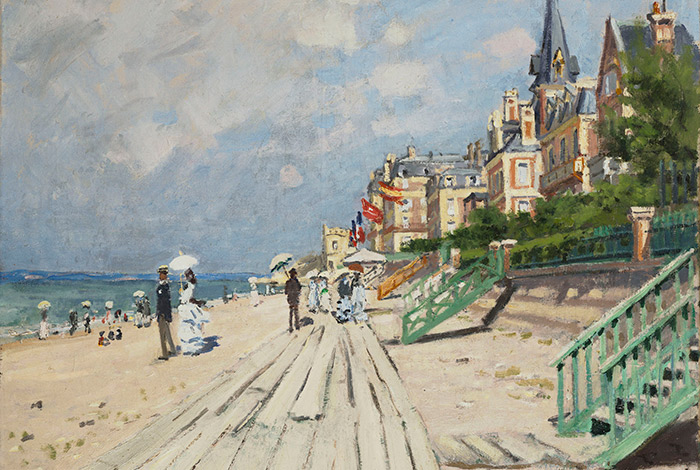
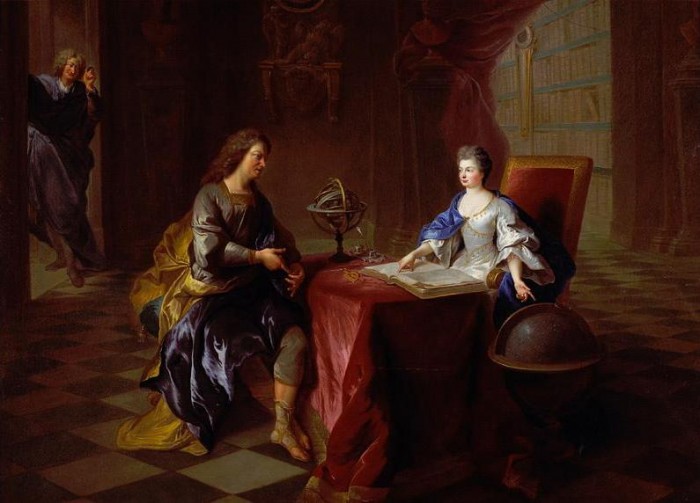
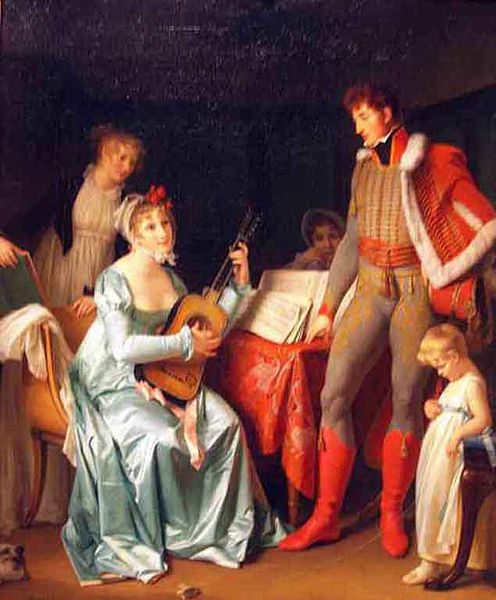
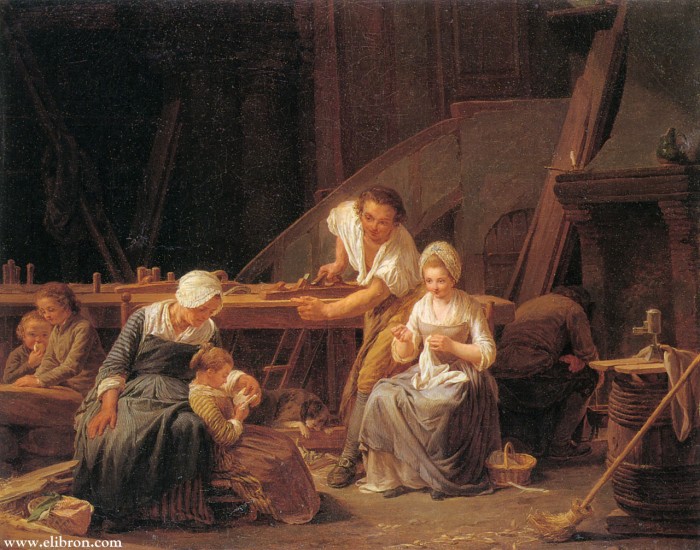
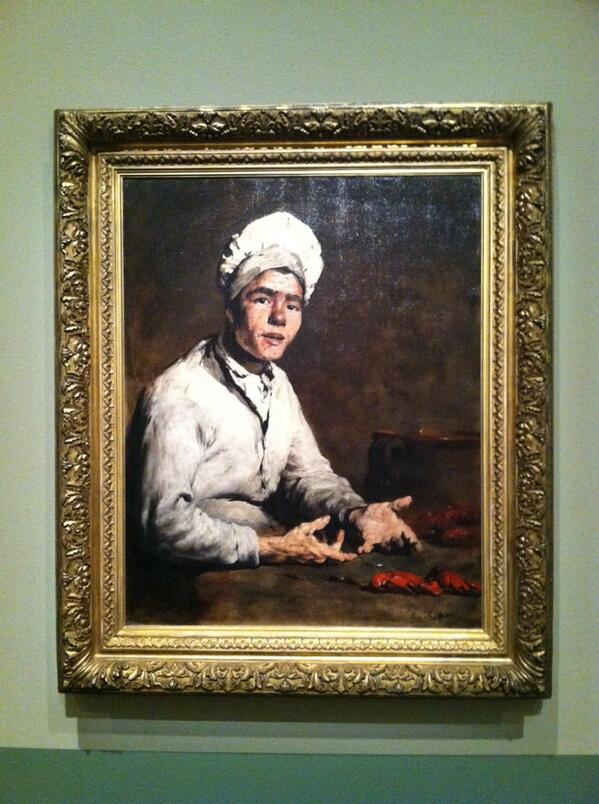
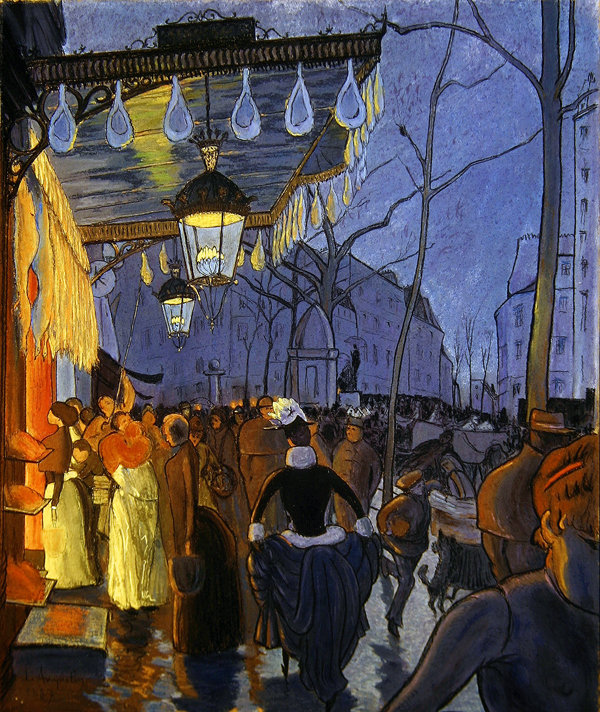






Read 0 comments and reply